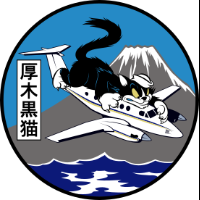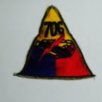-
Posts
368 -
Joined
-
Last visited
Profile Information
-
Gender
Male
-
Location
United States
Recent Profile Visitors
2,610 profile views
Hoops's Achievements

Established Member (3/9)
815
Reputation
-

1:72 Dream Model F-5E & F-5F
Hoops replied to dragan_mig31's topic in Ready for Inspection - Aircraft
Very nice builds! Good job on the custom decals, you should be proud of the work! Cheers, Hoops -

A-6A Intruder - Fujimi 1/72 - USMC
Hoops replied to Pat C's topic in Ready for Inspection - Aircraft
Very nice build! Congatulations! Cheers, Hoops -

1/72 Hasegawa Cessna A-37B Dragonfly
Hoops replied to Danuleson's topic in Ready for Inspection - Aircraft
Great looking build, congratulations! Hoops -
As I posted before, there are some pretty significant errors on the camouflage guide provided by the Xtradecal folks for their Omani three color scheme. g5431 by J2Hoops, on Flickr Additionally these aircraft all had dual language stencils for the big yellow rescue arrows and some others, so the kit stencils would not be appropriate for those.
-
At least they call it out in the notes, but the top and bottom views of the Omani three color camouflage are not even close. It took me a lot of work to figure the scheme out at the time, but symetric it is not. I've got a full four view of the camouflage as a .svg on my laptop at home, I'll export it and upload when I get back. I also don't believe the normal English language stencils are going to be 100% correct, it remains to be seen if any other company offers an alternative.
-
There are only two types of HUDs on the F-16, WAC being by far the most common. The WAR shows up on US Block 40/42 and a handful of export versions. Which ones I don't know off the top of my head. I'm not familiar with the Tamiya kit as it's not my scale, so I can't speak to any size discrepancies, but building the WAC HUD as molded should be fine.
-

Northrop F-20 Tigershark - also ran or what could have been?
Hoops replied to Pappy's topic in Eighties GB
There are a couple of things out there from garage aftermarket producers in Japan, but they are really small scale operations, really expensive and unless you live in Japan expensive to ship out. Cockpit and Exhaust set: https://www.1999.co.jp/eng/11172647 Pylons: https://v1models.booth.pm/items/4582022 Centerline Tank: https://v1models.booth.pm/items/4581995 Booth is kind of like "Etsy" in Japan. Cheers, Hoops -

Northrop F-20 Tigershark - also ran or what could have been?
Hoops replied to Pappy's topic in Eighties GB
I think that kit really benefits from some sections of sprue or rod/bar styrene to spread the fuselage halves a bit. This helps get the fuselage bottom flat, but it's still not ideal. Cheers, Hoops -
Good job fighting against the Italeri Jag kit, I think that that decal option is the best in the box and plan on building it myself. Cheers and congratulations! Hoops
-
Congratulations on a nice build. I really think that the Hasegawa kit is the best in 1/72 even though it does have a lot problems. We can all hope Airfix will scale down their new 1/48 Jag in a couple of years. Cheers! Hoops
-

Ready for Inspection - Hasegawa SU-35 FLanker-E 1/72
Hoops replied to Tankers14's topic in Ready for Inspection - Aircraft
Keep up the good work, man. Each build will get better! Cheers, Hoops -

Quick question about Israeli F-4E Kurnass and belly straps
Hoops replied to Hoops's topic in Aircraft Cold War
Hey Dennis, @Antoine gave a much better answer than I ever could have, I don't have any Kurnass specific reference books, just a handful of pictures that I have collected from the internet for my planned build. I haven't gotten far enough along with my 3D printing journey that I can create anything more than lower res test prints to check the dimensions of my models agains the kits themselves, but I'll be sure to tag you once I get around to building my Kurnass 2000. Watch the WIP forum I guess, maybe sometime? Hahaha, Cheers, Hoops -
To quote Jake Melampy's A-10 book regarding the VHF/FM lower antenna: "It can either be the swept variety ... or the straight, non swept variety ... depending on the manufacturer of the antenna. The straight, non swept antenna is more common, especially by the mid 1980s." Both are authorized in and in the supply system, so if one needs to be repaired or replaced, whatever is on hand, or can be sourced first, will probably be installed. No rhyme or reason as to which one is on which aircraft, just check your references for the particular airframe you are building. Cheers, hoops
-
Yeah, I always knew that the Hasegawa F-16 gear wells were shorter than other kits, but it wasn't until recently that I ready somewhere why they are. It's like a lightbulb went on, and I though, "OK, that makes sense." I'm looking forward to more progress! Cheers, Hoops
- 11 replies
-
- 1
-

-
Good progress on the kit, I'm looking forward to seeing more updates! Cheers, Hoops





